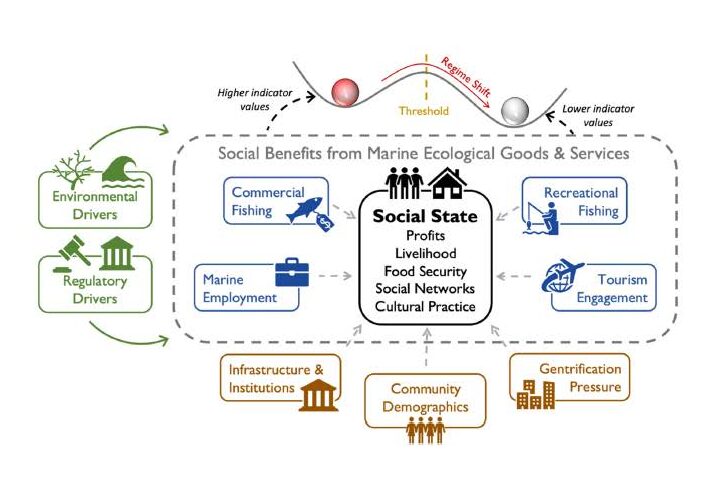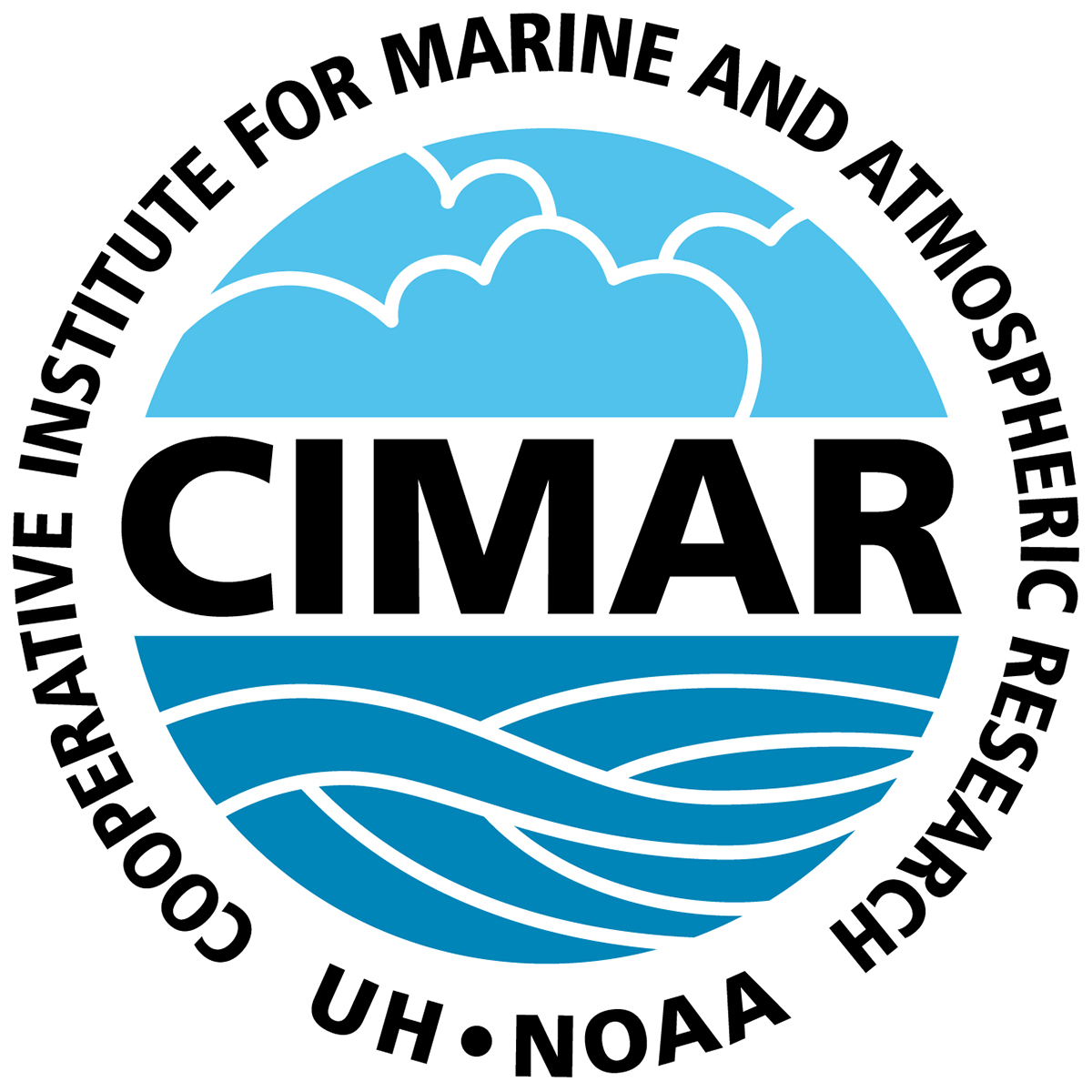Home > Research+Applications > Research Highlights > Ecosystem Structure and Function
Ecosystem Structure and Function Project
Coastal communities and nearby ecosystems make up social-ecological systems (SESs), where the environment provides goods and services that are important for social, economic, and cultural needs. Today, in the face of rapid political and environmental changes, these systems can experience stress that pushes them from being highly functional to less desirable states, where they can’t provide as many benefits to the human communities that depend on them. While we know a lot about how ecosystems change, we still have a lot to learn about how ecosystem shifts affect human societies and affect the relationship between the ecosystem and social system. Lansing Perng and her colleagues looked at how social factors related to ecosystem services—like jobs in fishing, tourism, and coastal work—have changed over time in Hawai‘i. Using models and data analysis, we can see when these changes happened and connect them to regulations and environmental events. The findings show how social and environmental changes are linked and offer ideas on how to better manage these systems to handle future challenges.
Perng, L. Y., Leong, K. M., Weijerman, M., & Oleson, K. L. L. (2024). A multi-decadal assessment of social thresholds and outcomes in marine social-ecological systems in Hawaiʻi. Marine Policy, 163, 106141.

Conceptual diagram of the marine resource-based social-ecological system in Hawaiʻi.

Lansing Perng

Conceptual diagram of the marine resource-based social-ecological system in Hawaiʻi.
Ecosystem Structure and Function Project
Coastal communities and nearby ecosystems make up social-ecological systems (SESs), where the environment provides goods and services that are important for social, economic, and cultural needs. Today, in the face of rapid political and environmental changes, these systems can experience stress that pushes them from being highly functional to less desirable states, where they can’t provide as many benefits to the human communities that depend on them. While we know a lot about how ecosystems change, we still have a lot to learn about how ecosystem shifts affect human societies and affect the relationship between the ecosystem and social system. Lansing Perng and her colleagues looked at how social factors related to ecosystem services—like jobs in fishing, tourism, and coastal work—have changed over time in Hawai‘i. Using models and data analysis, we can see when these changes happened and connect them to regulations and environmental events. The findings show how social and environmental changes are linked and offer ideas on how to better manage these systems to handle future challenges.
Perng, L. Y., Leong, K. M., Weijerman, M., & Oleson, K. L. L. (2024). A multi-decadal assessment of social thresholds and outcomes in marine social-ecological systems in Hawaiʻi. Marine Policy, 163, 106141.

